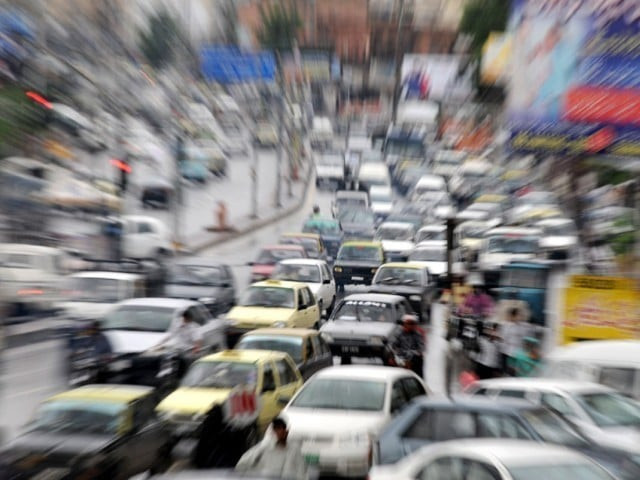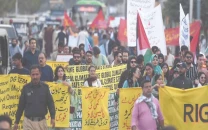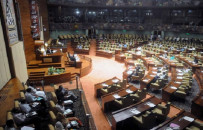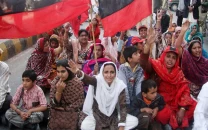Karachi’s transport system in chaos
Metropolis will have four depts with similar functions in the near future

Metropolis will have four depts with similar functions in the near future. PHOTO: AGHA MEHROZ
The Sindh government already has a transport and mass transit department. The other two are the traffic engineering bureau (TEB) of Karachi Development Authority (KDA) and the Karachi mass transit cell (KMTC). Moreover, the provision of managing transport also lies within the domain of the Karachi Metropolitan Corporation (KMC) according to the Sindh Local Government Act (SLGA), 2013 but the KMC is yet to launch such a department.
200 buses for Lahore reach Karachi

According to the director of KDA's TEB- formally known as the transport and communication department when it was under KMC - Qazi Abdul Qadir, initially the department belonged to the KDA but when the City District Government Karachi (CDGK) was formed it was handed over to the local government. Then, when the KMC was formed in 2013, the transport department went back to the KDA, but was working under the umbrella of the KMC for three years, and hence all the revenue from the transport department used to go to the KMC.
After the revival of the KDA, he said it has automatically been devolved to the KDA and renamed the TEB. Their functions, according to him, will be to look at road safety issues, traffic volume count, designs and geometrical improvements of different intersections and pedestrian bridges of the city.
The provincial government's decision to devolve the TCD to the KDA may lead to administrative chaos as a tussle over territorial jurisdictions between the KDA and KMC may arise.
KMC's role?
According to KMC municipal services senior director Masood Alam, there has been a mix and match regarding the division of the transport department between the two agencies [KMC and KDA] and the transition committee is working on that.
Karachi's Green Line bus will be more beautiful than Lahore metro: PM
He said that the Compressed Natural Gas buses, which belonged to the KMC's transport department, would remain with them and whenever the KMC would revive its transport department again, CNG buses would be its component.
When asked about the fate of the pedestrian bridges, he said that there would be more territorial divisions in that regard. The pedestrian bridges falling under the KMC's circle, according to him, would be handled by the KMC and KDA would look after pedestrian bridges in their circles. KDA's Qadir seconded the statement.
However, an official of the KMC, on the condition of anonymity, told The Express Tribune that if territorial divisions take place, there will be massive administrative chaos in the city. KDA, according to him, would claim ownership over housing schemes and KMC would follow suit. "There will be a fight for every street corner of the city," the official said.
Funds collection
If all the pedestrian bridges of the city are handed over to the KDA, the revenue which the KMC used to earn from the pedestrian bridges through its local tax department - devolved to the District Municipal Corporations (DMCs) around eight months ago -the Sindh government would pocket all that money, said the KMC official.
The official lamented that the chief of the KDA will only be implementing the Sindh government's policies as the local government minister heads the authority's governing body, while the city's commissioner is the vice-chairman followed by one member each of the provincial and national assembly. Then comes the KDA director-general.
In an ideal situation, according to the official, two departments must not be performing the same functions in the city. The KMTC, which is under the KDA, looks after the mass transit lines of the city reports to the KDA chief as well as to the Sindh government's transport and mass transit department. Likewise, the KMC's transport department, when it is revived, will have the same functions as that of the KDA's TED, explained the official.
Published in The Express Tribune, September 26th, 2016.



















COMMENTS
Comments are moderated and generally will be posted if they are on-topic and not abusive.
For more information, please see our Comments FAQ